- Why Seedlings Topping is a Common Issue and How to Fix It
- Causes of Seedlings Topping:
- How to Fix Seedlings Topping:
- The Importance of Topping Tomato Seedlings
- Promotes Bushier Growth
- Prevents Excessive Height
- Increases Fruit Production
- Conclusion
- Common Reasons for Topping Tomato Seedlings
- Effects of Improper Topping Techniques
- Identifying Topped Tomato Seedlings
- Preventing Topping Issues in Tomato Seedlings
- Why Topping is a Common Problem
- Proper Management Techniques
- The Consequences of Topping
- Conclusion
- Correct Topping Techniques for Tomato Seedlings
- 1. Timing:
- 2. Selective pruning:
- 3. Pinching versus cutting:
- 4. Removing suckers:
- 5. Training and staking:
- 6. Regular maintenance:
- Rejuvenating Topped Tomato Seedlings
- 1. Prune the Tops
- 2. Provide Adequate Light
- 3. Transplant into Larger Containers
- 4. Support with Stakes or Trellis
- 5. Water and Fertilize Properly
- 6. Pinch off Suckers
- 7. Monitor for Pests and Diseases
- Frequently Asked Questions about Topping Tomato Seedlings
- Q: What is topping tomato seedlings?
- Q: Why is topping tomato seedlings a common problem?
- Q: How can I prevent topping tomato seedlings?
- Q: When should tomato seedlings be topped?
- Q: How should tomato seedlings be topped?
- Q: What are the benefits of topping tomato seedlings?
- Q: Are there any risks associated with topping tomato seedlings?
- “Question-Answer”
- Why do tomato seedlings need to be topped?
- When is the best time to top tomato seedlings?
- What is the proper method for topping tomato seedlings?
- What are the common problems that arise from topping tomato seedlings?
- How can stunted growth be prevented after topping tomato seedlings?
- What is an alternative to topping tomato seedlings?
- “Video” You’re Killing Your Tomatoes if You Do This, 5 MISTAKES You Can’t Afford to Make Growing Tomatoes
Growing tomatoes from seed can be a rewarding experience, but it can also be a frustrating one. Many gardeners encounter the problem of tomato seedlings “topping” – a phenomenon where the stem of the plant becomes weak and bends over. This can lead to stunted growth, reduced yield, and even death of the plant.
There are several reasons why topping occurs in tomato seedlings. One common cause is insufficient light. Tomato plants require at least 10-12 hours of direct sunlight each day to grow properly. If seedlings are grown indoors or in a location with limited sunlight, they may become weak and leggy, making them more prone to topping.
Another potential cause of topping is overwatering. Tomato seedlings need to be kept consistently moist, but not overly saturated. When the soil is too wet, the roots may become waterlogged, leading to weak stems. It’s important to strike a balance and provide adequate drainage to prevent this problem.
To solve the problem of topping tomato seedlings, there are a few steps you can take. First, ensure that your seedlings are receiving enough light. If growing indoors, consider using grow lights or placing the seedlings in a south-facing window. If growing outdoors, choose a location with full sun.
Second, be mindful of your watering practices. Water the seedlings when the top inch of soil feels dry to the touch, and make sure the pots have drainage holes to prevent waterlogging. Additionally, avoid over-fertilizing the seedlings, as this can also contribute to weak stems.
By providing adequate light, proper watering, and balanced nutrition, you can greatly reduce the occurrence of topping in tomato seedlings. With a little extra attention and care, you’ll be rewarded with strong and healthy plants that produce a bountiful harvest.
Why Seedlings Topping is a Common Issue and How to Fix It
Growing tomatoes from seeds can be a rewarding experience for gardeners, but sometimes issues can arise, such as seedlings topping. Seedlings topping refers to the sudden stop in vertical growth of the tomato plants, causing stunted growth and weak stems. This common issue can be frustrating, but understanding the causes and implementing the right solutions can help fix the problem.
Causes of Seedlings Topping:
- Insufficient Light: Lack of adequate sunlight or low-quality artificial lighting can result in weak and spindly seedlings that are prone to topping.
- Overcrowding: Planting too many tomato seeds in a single container or not providing enough spacing between seedlings can lead to competition for light and nutrients, causing topping.
- Improper Watering: Inconsistent or excessive watering can disrupt the proper development of tomato seedlings, making them more susceptible to topping.
- Nutrient Imbalance: Insufficient or incorrect nutrient levels in the soil or growing medium can hinder the growth of tomato seedlings and result in topping.
How to Fix Seedlings Topping:
- Provide Adequate Light: Place tomato seedlings in a location that receives at least 6 to 8 hours of direct sunlight each day. If using artificial lighting, ensure the lights are positioned at the right distance and provide the appropriate spectrum for optimal growth.
- Thin out Seedlings: If seedlings are overcrowded, carefully remove the weaker ones to provide ample space for each plant to grow and prevent competition.
- Water Properly: Water tomato seedlings thoroughly but avoid overwatering. Allow the top layer of soil to dry out slightly between watering to promote healthy root development.
- Ensure Proper Nutrient Balance: Use a balanced fertilizer specifically formulated for seedlings. Follow the recommended dosage and application instructions to provide the necessary nutrients for healthy growth.
Topping tomato seedlings can be a common problem, but with the right care and attention, it can be resolved. By addressing the causes and implementing the suggested solutions, gardeners can ensure strong and healthy tomato seedlings that will thrive throughout the growing season.
The Importance of Topping Tomato Seedlings
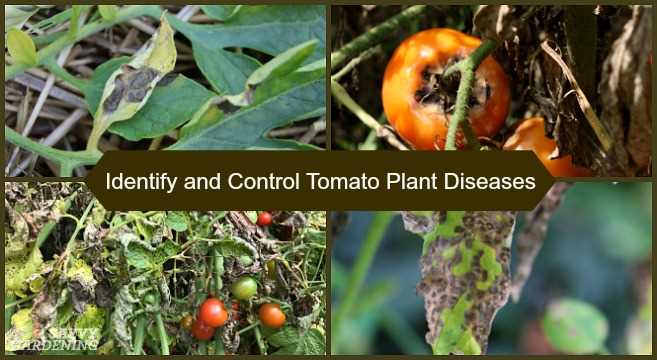
When it comes to growing tomatoes, topping seedlings is an important practice that can greatly impact the growth and productivity of the plants. Topping refers to the removal of the top portion of a tomato plant, usually the main stem or the terminal bud. This technique is commonly used to encourage a bushier and more compact plant, as well as to increase yields.
Promotes Bushier Growth
By topping tomato seedlings, you are stimulating lateral growth. Removing the top portion of the main stem encourages the plant to produce more side branches, which results in a bushier and more compact plant. This is particularly beneficial for indeterminate tomato varieties, which have a tendency to grow tall and leggy.
The increased branching not only adds to the overall structure and density of the plant, but it also allows for more foliage and fruit production. More branches mean more leaves, which means more photosynthesis and energy production. This ultimately leads to a stronger and healthier plant that is capable of producing higher yields.
Prevents Excessive Height
One of the main reasons why topping is commonly practiced is to prevent tomato plants from growing excessively tall. Indeterminate varieties can easily grow several feet tall if left unmanaged. While height may not seem like a problem initially, it can become an issue when the plant begins to lean or flop over due to its own weight or wind. Additionally, a tall plant can be difficult to support and can suffer from inadequate sun exposure and air circulation.
Topping the plant helps to control its height and keep it more manageable. By removing the terminal bud, you are essentially stopping vertical growth and redirecting the plant’s energy towards lateral growth. This results in a more compact and sturdier plant that is easier to support and manage, especially as it starts to bear the weight of its fruits.
Increases Fruit Production
Another important benefit of topping tomato seedlings is the potential increase in fruit production. As mentioned earlier, topping encourages the plant to produce more side branches, which in turn leads to more flowers and ultimately, more fruit. The increased foliage from branching also provides more shade and protection for the developing fruits, reducing the risk of sunscald and ensuring a higher quality crop.
Furthermore, topping can help extend the fruiting period by promoting a more balanced and prolonged production. With more branches and more flowers, the plant is less likely to experience a sudden and rapid fruit ripening, which can result in an overwhelming harvest followed by a rapid decline in production. Instead, the fruits mature more evenly over an extended period, giving you a steady supply of tomatoes.
Conclusion
Topping tomato seedlings is a vital practice that helps promote bushier growth, control excessive height, and increase fruit production. By understanding the importance of topping, you can ensure healthier, more productive tomato plants that will reward you with an abundant harvest.
Common Reasons for Topping Tomato Seedlings
When tomato seedlings are topped, it means that their growing tips or shoots are intentionally removed. This can be a common problem for a few reasons:
- Inexperienced gardeners: Topping tomato seedlings may happen due to lack of knowledge or experience in proper tomato plant care.
- Overcrowding: If tomato seedlings are planted too closely together, they may compete for light and nutrients, leading to weak growth. Topping may be done to redirect energy and resources to the remaining plants.
- Excessive vegetative growth: Tomato plants that have an abundance of vegetative growth and not enough fruit production can be topped to promote more fruiting. This is often done to encourage a better balance between vegetative and reproductive growth.
- Height control: Some tomato varieties can grow tall and become unwieldy. Topping can help control the height of the plants and prevent them from becoming too leggy or falling over.
- Training and shaping: Topping can also be done as part of a pruning and training technique to shape the tomato plants and encourage a more compact and bushy growth habit.
While topping tomato seedlings can have some benefits, it should be done carefully and with proper understanding of the plant’s growth patterns and needs. Incorrect topping or excessive pruning can stunt the growth of the tomato plants or reduce their overall productivity.
Effects of Improper Topping Techniques
Topping is a common problem when it comes to tomato seedlings. When tomato plants are topped incorrectly, several negative effects can occur. These effects include:
- Stunted Growth: Improper topping can cause stunted growth in tomato seedlings. This is because the plant’s apical meristem, the tissue responsible for upward growth, is removed. Without the apical meristem, the plant cannot grow as tall as it should.
- Reduced Fruit Production: Topping tomato seedlings incorrectly can also lead to a reduction in fruit production. This is because removing the apical meristem disrupts the plant’s hormonal balance, affecting the development of flowers and fruit.
- Increased Vulnerability to Disease: Tomato plants that are topped incorrectly are more susceptible to diseases. The removal of the apical meristem weakens the plant’s immune system, making it easier for pathogens to attack.
- Decreased Nutrient Uptake: Another effect of improper topping techniques is a decrease in the plant’s ability to take up nutrients from the soil. The removal of the apical meristem disrupts the flow of nutrients throughout the plant, leading to nutrient deficiencies.
It is essential to avoid improper topping techniques to ensure the healthy growth and development of tomato seedlings. Proper topping techniques involve removing only the top portion of the plant, leaving behind some leaves to support continued growth. By following the correct practices, gardeners can avoid the negative effects associated with improper topping and cultivate robust and productive tomato plants.
Identifying Topped Tomato Seedlings
Identifying topped tomato seedlings can be an important step in understanding and solving the problem. Here are some ways to identify if your tomato seedlings have been topped:
- Affected stems: Look for stems that have been cut or broken off above the first set of leaves. Topped seedlings will have a flat, cut-off appearance.
- Stubby appearance: Topped tomato seedlings will tend to have a shorter and stubbier appearance compared to healthy seedlings. This is because their growth has been interrupted.
- Unusual branching: Topped seedlings may start to branch out from the cut-off point rather than growing in a single upright stem. The presence of multiple side shoots can be a sign of topping.
- Slow growth: Topped tomato seedlings often show slower growth compared to healthy seedlings. This is because topping can disrupt the plant’s natural growth patterns and delay its development.
It’s important to note that topping is not a natural occurrence in tomato seedlings and is typically caused by human intervention or accidental damage. By identifying topped seedlings, you can take appropriate measures to prevent further damage and promote healthy growth.
Preventing Topping Issues in Tomato Seedlings
Why Topping is a Common Problem
When tomato seedlings are topped, it means that their main growth tip (also known as the apical meristem) is removed. This usually happens accidentally or due to improper care of the seedlings. Topping can have negative effects on the development and productivity of tomato plants, so it is important to prevent this issue.
Proper Management Techniques
By following a few proper management techniques, you can prevent topping issues in tomato seedlings:
- Maintain proper spacing: Ensure that there is enough space between seedlings to avoid overcrowding. Overcrowding can cause the plants to compete for light and other resources, leading to the need for topping.
- Provide adequate support: Properly support the growing tomato plants to prevent them from bending or falling over. This can be done by using stakes, trellises, or cages.
- Regularly prune: Pruning is important to remove excess foliage and maintain proper shape and size of the plants. This can help reduce the need for topping.
- Monitor growth: Regularly monitor the growth of tomato seedlings to identify any signs of elongation or weak stems. Taking early action can prevent the need for topping.
- Water and fertilize appropriately: Provide the seedlings with the proper amount of water and nutrients to ensure healthy growth. Overwatering or fertilizing can lead to rapid but weak growth, increasing the chances of topping.
The Consequences of Topping
Topping tomato seedlings can have several negative consequences:
- Reduced productivity: Topping can decrease the overall productivity of the tomato plants, resulting in a lower yield.
- Delayed maturity: Topped plants may take longer to mature, leading to a delay in harvesting.
- Increased susceptibility to diseases: Open wounds caused by topping can make the plants more vulnerable to diseases and pests.
- Stunted growth: Topping can stunt the growth and development of tomato plants, resulting in smaller and less healthy plants.
- Uneven fruit ripening: Topped plants may produce fruits that ripen unevenly, making it difficult to harvest them at the right time.
Conclusion
Preventing topping issues in tomato seedlings is crucial for their optimal growth and productivity. By implementing proper management techniques and monitoring the growth of the seedlings, you can avoid the negative consequences of topping and ensure healthy and fruitful tomato plants.
Correct Topping Techniques for Tomato Seedlings
When it comes to growing healthy tomato seedlings, knowing the correct topping techniques is vital. Topping is the process of removing the top portion of a tomato plant to encourage lateral growth and prevent it from becoming too tall and spindly. Here are some tips for correctly topping tomato seedlings:
1. Timing:
It is important to wait until the tomato seedlings have developed a few sets of true leaves before attempting to top them. This is usually around 4-6 weeks after sowing the seeds.
2. Selective pruning:
When topping tomato seedlings, it is best to choose a branch that is growing vigorously and has several sets of leaves. Make sure to make a clean cut just above a leaf node, as this will encourage new growth from that point.
3. Pinching versus cutting:
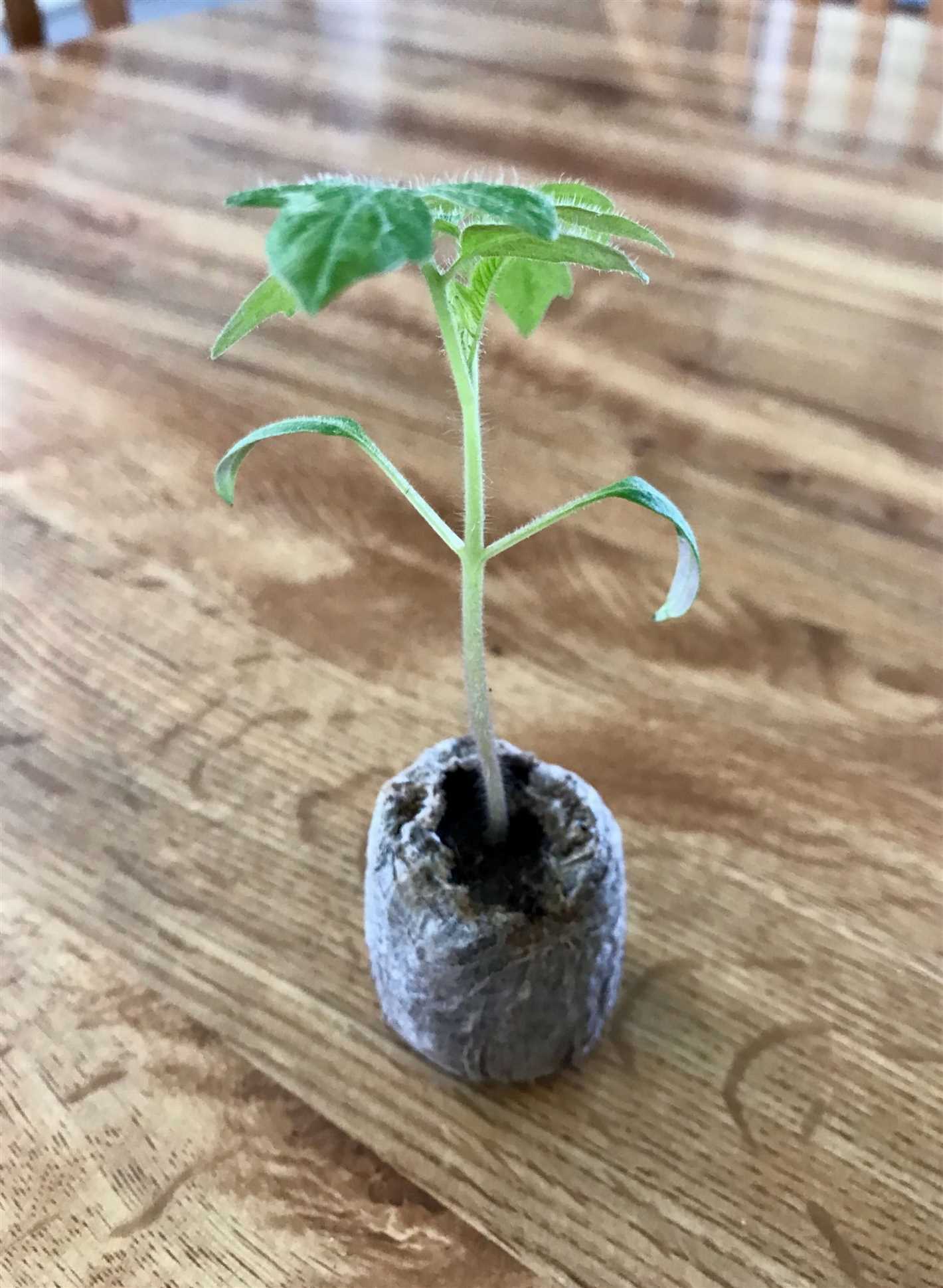
While some gardeners prefer to pinch off the top portion of the tomato seedling, others opt for using a sharp, sterilized pair of pruners to make a clean cut. Whichever method you choose, the aim is to remove approximately 1/3 to 1/2 of the plant’s height.
4. Removing suckers:
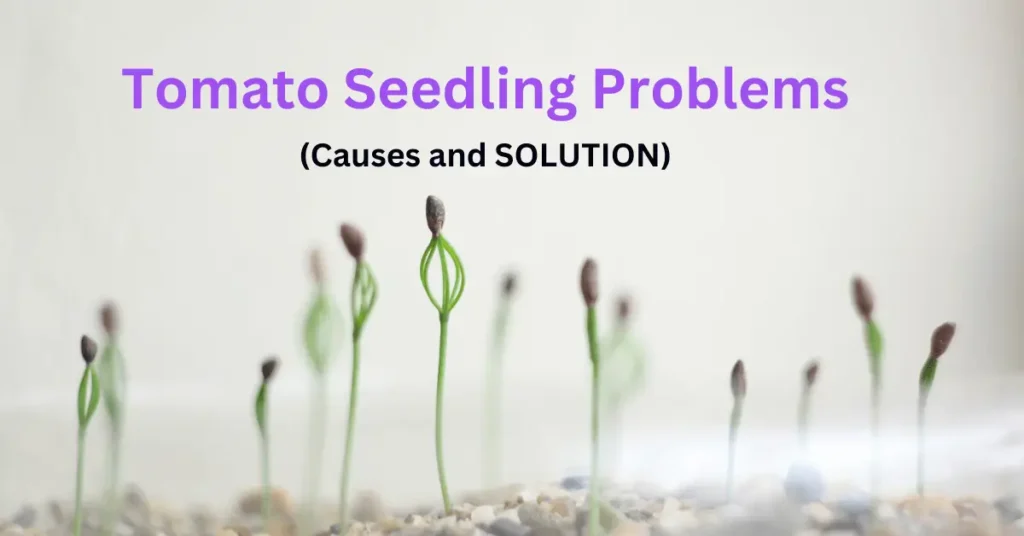
In addition to topping, removing the suckers that grow in the leaf axils of tomato plants is another technique to promote lateral growth. Suckers are small shoots that emerge between the main stem and branches, and if left unremoved, they can divert energy away from the main plant.
5. Training and staking:
After topping the tomato seedlings, it is important to provide support, such as stakes or cages, to help them grow upright. This will prevent the plants from bending or breaking due to their increased lateral growth.
6. Regular maintenance:
Once the tomato seedlings have been topped, it is important to monitor their growth and continue removing any additional suckers or side shoots that may emerge. Regularly checking for pests, providing adequate water and nutrients, and ensuring they receive plenty of sunlight will also contribute to their overall health and productivity.
By following these correct topping techniques, you can ensure that your tomato seedlings grow into strong and productive plants, providing you with a bountiful harvest.
Rejuvenating Topped Tomato Seedlings
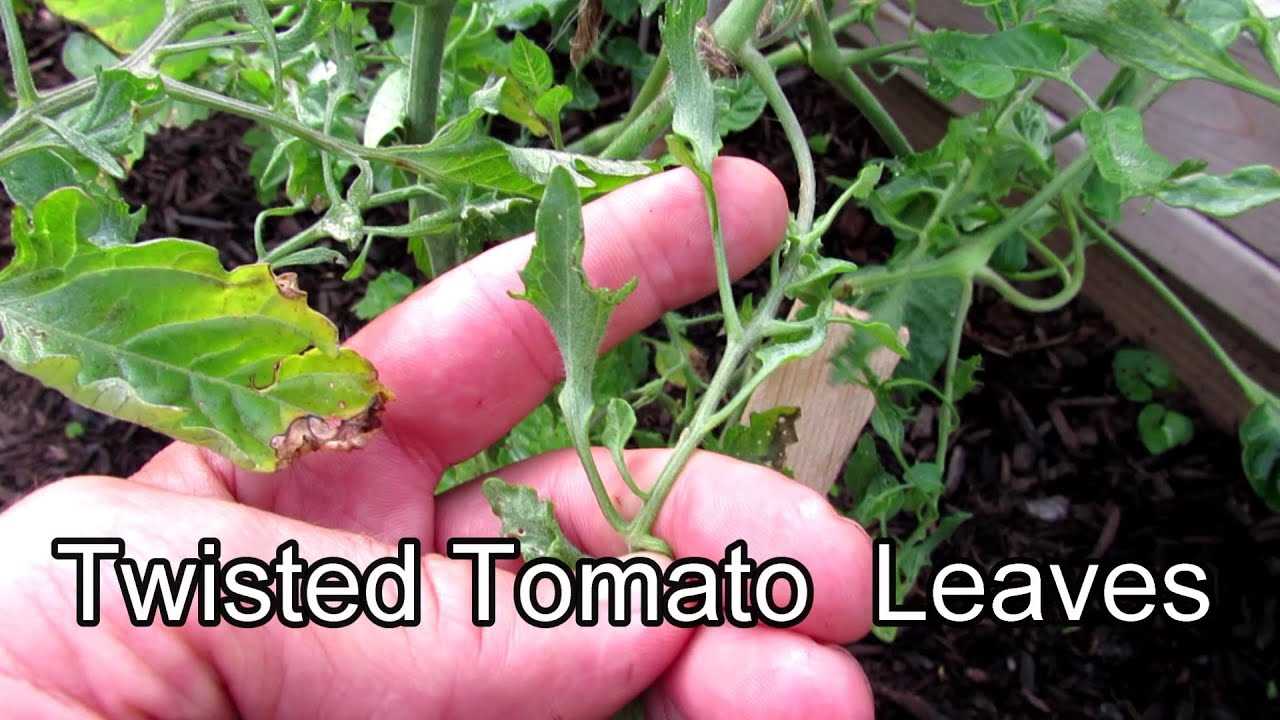
If you’ve accidentally topped your tomato seedlings too early or they are growing weak and leggy, don’t worry! There are several steps you can take to rejuvenate them and encourage healthy growth.
1. Prune the Tops
If you topped your tomato seedlings too early and they are starting to look weak, you can prune the tops to remove the damaged growth. Use clean and sharp scissors to make clean cuts just above a set of healthy leaves.
2. Provide Adequate Light
Weak and leggy tomato seedlings are often a result of insufficient light. Move your seedlings to a location where they can receive at least 6 hours of direct sunlight per day or place them under a grow light for 12-14 hours a day.
3. Transplant into Larger Containers
Transplant your tomato seedlings into larger pots to give their roots more space to grow. Use a well-draining potting mix and make sure to transplant them at the same depth they were growing before. This will provide stability and encourage new root development.
4. Support with Stakes or Trellis
As your tomato seedlings grow, provide support by staking them or setting up a trellis system. This will help prevent them from collapsing under their own weight and promote upward growth.
5. Water and Fertilize Properly
Ensure your tomato seedlings are receiving the right amount of water and nutrients. Avoid overwatering, as this can lead to root rot, and fertilizer lightly every 2-3 weeks with a balanced vegetable fertilizer.
6. Pinch off Suckers
Regularly pinch off any suckers that develop on your tomato plants. These are the small shoots that grow in the leaf axils, and removing them will help redirect energy towards fruit production and overall plant growth.
7. Monitor for Pests and Diseases
Keep a close eye on your tomato seedlings for any signs of pests or diseases, such as aphids, whiteflies, or fungal infections. Treat any issues promptly to prevent them from stunting growth or causing further damage.
By following these steps, you can rejuvenate topped tomato seedlings and promote healthy growth. Remember to provide adequate light, transplant into larger containers, provide support, water and fertilize properly, pinch off suckers, and monitor for pests and diseases. Happy gardening!
Frequently Asked Questions about Topping Tomato Seedlings
Q: What is topping tomato seedlings?
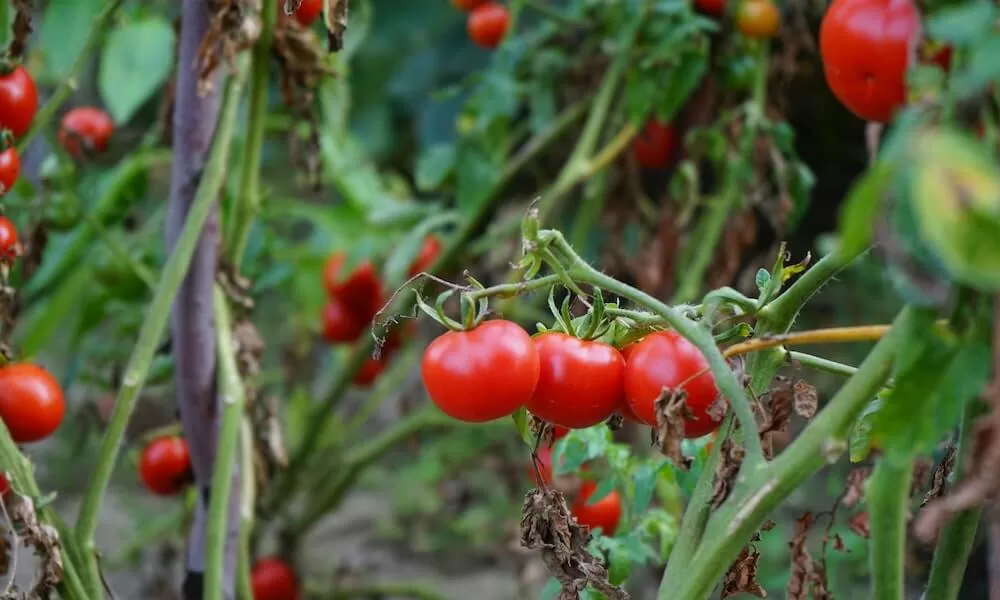
Topping tomato seedlings refers to the practice of removing the top portion of a tomato plant’s main stem. This is done to encourage the plant to branch out and produce more side shoots, which can increase the overall yield of the plant.
Q: Why is topping tomato seedlings a common problem?
Topping tomato seedlings can become a problem when it is done too early or too aggressively. If the plant is topped before it has developed enough side shoots, it may not be able to recover and produce a strong, healthy plant. Additionally, if the plant is topped too aggressively, it may become stunted and struggle to grow properly.
Q: How can I prevent topping tomato seedlings?
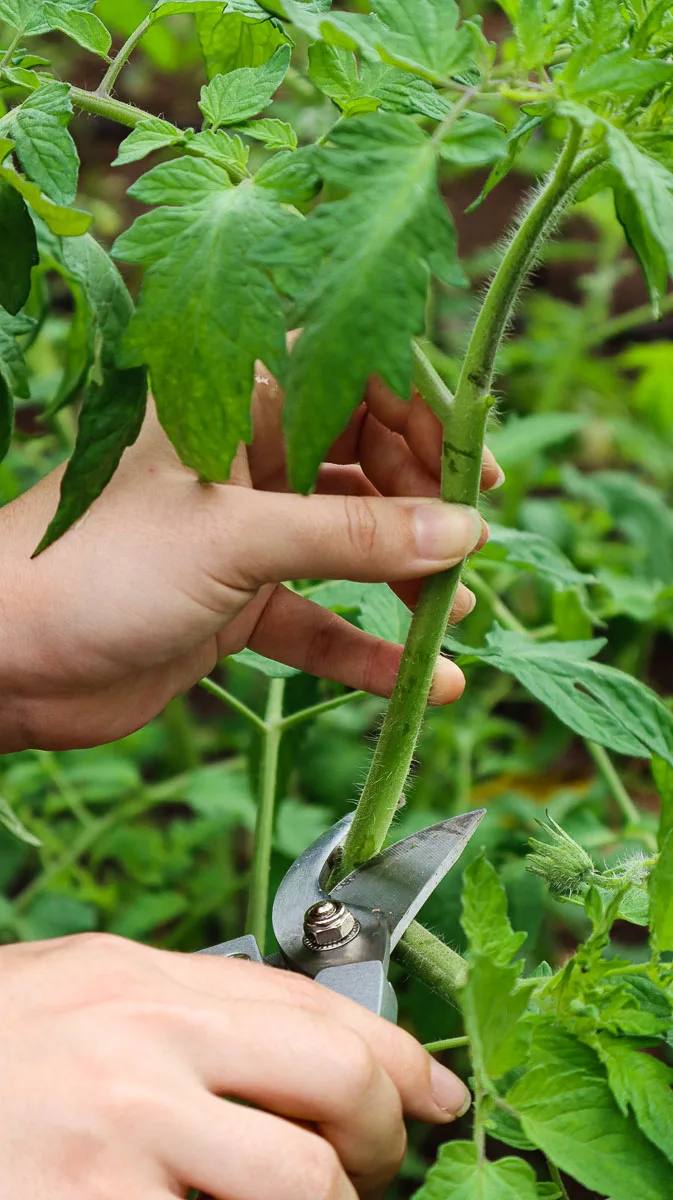
The best way to prevent the need for topping tomato seedlings is to provide the plants with the proper care and support from the beginning. This includes providing adequate spacing, feeding and watering the plants regularly, and providing them with sufficient sunlight. By meeting the plants’ basic needs, they are less likely to become overcrowded and require topping.
Q: When should tomato seedlings be topped?
Tomato seedlings should only be topped once they have developed several strong side shoots. This usually occurs when the plant is around 6-8 inches tall. It is important to wait until the plant is strong enough to handle the removal of the top portion of the main stem without suffering long-term damage.
Q: How should tomato seedlings be topped?
When topping tomato seedlings, it is important to use a clean, sharp pair of scissors or pruners. The cut should be made just above a set of leaves or side shoots. By making a clean cut, the plant is more likely to heal quickly and continue to grow and produce side shoots.
Q: What are the benefits of topping tomato seedlings?
Topping tomato seedlings can have several benefits. It can encourage the plant to produce more side shoots, which can increase the overall yield of tomatoes. Additionally, topping can help to keep the plant compact and more manageable, especially in situations where space is limited.
Q: Are there any risks associated with topping tomato seedlings?
While topping tomato seedlings can be beneficial, there are some risks involved. If the topping is done too early or too aggressively, it can stunt the growth of the plant and limit its overall yield. Additionally, if the cut is not made cleanly or if the tools used are not sanitized, it can introduce disease or pests to the plant.
“Question-Answer”
Why do tomato seedlings need to be topped?
Tomato seedlings need to be topped in order to promote stronger and bushier growth. Topping helps redirect the plant’s energy into multiple stems, resulting in more branches and a fuller plant.
When is the best time to top tomato seedlings?
The best time to top tomato seedlings is when they have two or three sets of true leaves. At this stage, the seedlings are strong enough to handle the stress of topping, but not too advanced in growth.
What is the proper method for topping tomato seedlings?
The proper method for topping tomato seedlings is to use clean and sharp pruning shears to cut off the top inch or two of the main stem. It is important to make a clean cut just above a leaf node, as this is where new growth will emerge.
What are the common problems that arise from topping tomato seedlings?
The common problems that arise from topping tomato seedlings include stunted growth, delayed fruit production, and an increased risk of disease and pests. Topping should be done carefully and at the right stage to minimize these issues.
How can stunted growth be prevented after topping tomato seedlings?
To prevent stunted growth after topping tomato seedlings, it is important to provide them with adequate sunlight, water, and nutrients. They should also be spaced properly and given enough room for air circulation to avoid crowding and competition for resources.
What is an alternative to topping tomato seedlings?
An alternative to topping tomato seedlings is to pinch off the side shoots or suckers that develop between the main stem and the branches. This method, known as “pruning,” helps promote airflow and reduce the risk of disease while still encouraging bushier growth.







